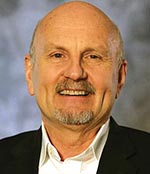Safety Leadership: Using artificial intelligence to identify serious injury and fatality potential: Part II

Editor’s Note: Achieving and sustaining an injury-free workplace demands strong leadership. In this monthly column, experts from global consulting firm DEKRA share their point of view on what leaders need to know to guide their organizations to safety excellence.
In last month’s column, we reviewed the potential role of artificial intelligence in determining serious injury and fatality potential based on a “reading” of the case narrative. We at DEKRA believe it’s possible that AI can determine exposure type and SIFp – for organizations with a large number of high-quality case narratives.
Unfortunately, few organizations have the quantity and quality of data required. Our work with AI has shown us that by using a different approach, we can achieve our two primary objectives: removing the subjectivity and delay in determining SIFp. The approach is to use an expert logic system.
This system is simple and works as follows: First, determine the primary exposure that created the vulnerability that led to the incident. Second, answer the “essential” questions that provide the information needed to determine SIFp classification.
Let’s take a straightforward example: When the exposure is a fall, the questions that must be answered to determine SIFp are:
- Did the person fall from a height greater than 3.9 feet?
- Did the person fall backward?
- Did the person fall where SIF hazards were present in the immediate fall zone?
- Was it reasonably likely the person was at a height greater than 3.9 feet? (Example: If they were working on a 6-foot stepladder, yes; if on a 2-foot step stool, no.)
An affirmative answer to any of these essential questions would classify the incident as having SIFp.
With the expert logic system, each exposure type has its own unique set of essential questions. Subjectivity is removed and timeliness improved. The added benefit is that if people follow the system, they’ll gain expertise in asking the right questions prior to data entry.
As with most changes to incident investigations, the expert logic system is simple but will need a sound change management plan to implement. To succeed, the system has two requirements: A core set of exposure types with clear definitions. The good news is we’ve already created the exposure types and tested them on numerous datasets. The bad news is that most organizations already use some type of exposure classification, so there will be inertia for making a change. In looking at a lot of incident databases, we found exposure classification is common. However:
- Most organizations have too many categories.
- The exposure types aren’t really exposures. Instead, they’re a mix of agents, behaviors, exposures, hazards and injury types.
- Definitions are missing or not well known.
- There’s little training and calibration around selecting the exposure type.
In our experience, fewer than 10 exposures cover 90% of most organizations’ incidents.
A set of essential questions for each exposure type. Identifying the exposure type is the first step. The next is having the information essential to determine SIFp. Again, for the 15 exposure types, we’ve taken on compiling the essential questions. What the organization must create is the expectation that its people will follow a rigorous process in collecting the information needed for accurate classification. Again, the good news is that the number of questions for any given exposure is small.
Sometimes you have an idea in mind and you start working toward it. In the beginning, the idea might seem easily achievable. Then reality sets in. You can accept the setback and move to the next thing, or you can learn from the experience and see if there’s an alternative path.
This is what happened to DEKRA last year. We expended a lot of effort in an attempt to train AI to determine SIFp. We’re not there yet. But in the process, we discovered an alternative path that is effective in determining SIFp.
Because we want everyone to benefit from our work, visit our website and try our free SIF Potential Indicator.
This article represents the views of the author and should not be construed as a National Safety Council endorsement.
 Don Groover is the general manager of DEKRA North America (dekra.us). He works with senior executives and leadership teams throughout the world to help them develop an understanding of the current state of exposure control and to develop strategic safety-driven culture change.
Don Groover is the general manager of DEKRA North America (dekra.us). He works with senior executives and leadership teams throughout the world to help them develop an understanding of the current state of exposure control and to develop strategic safety-driven culture change.
Direct to your inbox: Sign up to be notified in email about new "Safety Leadership" columns.
Post a comment to this article
Safety+Health welcomes comments that promote respectful dialogue. Please stay on topic. Comments that contain personal attacks, profanity or abusive language – or those aggressively promoting products or services – will be removed. We reserve the right to determine which comments violate our comment policy. (Anonymous comments are welcome; merely skip the “name” field in the comment box. An email address is required but will not be included with your comment.)

